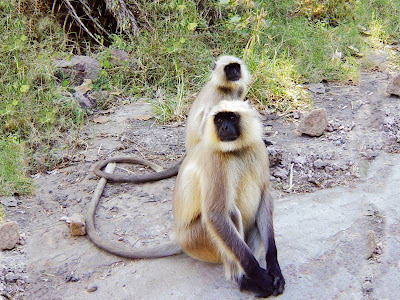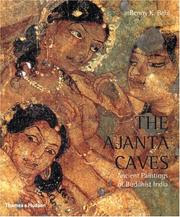Bhopal- the capital city of Madhya Pradesh is famous for its historic monuments, magnificent temples, alluring lakes and awe-inspiring natural beauty. This is a culturally rich city that has given birth to the famous poets, philosophers, warriors and genius builders. It offers an unsurpassed blend of the old world charm and modern day cosmopolitan life. There is no dearth of attractions for the pilgrim travelers among which Jama Masjid, Bhopal is an indispensable one. It is one of the most revered ones by the Muslims from all over the country.
Introduction to Jama Masjid, Bhopal:
The Jama Masjid in Bhopal is no less impressive than the Taj-ul-Masjid, and is the most well-preserved monument with its two massive minarets that can be viewed from a considerable distance. This particular mosque occupies an important place among the various holy places in Bhopal and is visited by a large number of tourists every year.
History of Jama Masjid, Bhopal:
Though not so huge in size, it was built in the year 1837 by Qudisiya Begum. It has still retained its old charisma that leaves quite an impact on its visitors.
Description of Jama Masjid, Bhopal:
The mosque is an excellent instance of the dexterity of Islamic artisans. It houses three bulbous cupolas, but the main feature of the Jama Masjid is its interior decorations and awesome architectural work. The mosque is ornately adorned with a chain of alabaster-white columned arches that offers a very attractive sight, and the internal sanctum of the mosque is carved out of the marble. The Jama Masjid was extensively renovated and its complex also comprises a lovely small pond. A visit to this lovely tourist site offers complete peace and harmony.
how to reach
by train:-
Bhopal Railway Station is a major railhead in Mumbai – Delhi broad gauge. It has connection trains to all major cities in India. Daily Shatabdi expresses shuttle between Bhopal and Delhi.
| City Name | Railway Station | Distance |
| Habibganj | Habibganj (HBJ) | 4 km |
| Bairagarh | Bairagarh (BIH) | 10 km |
Trains to Bhopal (BPL)
| Starting Station | Train | Arrival at Bhopal | Service Days |
| Bangalore (SBC) 8 more trains | Gorakhpur Exp (12592) | 12:10 AM (duration: 31h 20m) | Mon |
| Rajdhani Exp (12429) | 09:25 PM (duration: 25h 5m) | Mon, Wed, Thu & Sun | |
| Chennai (MAS) 13 more trains | Nzm Garib Rath (12611) | 02:10 AM (duration: 20h) | Sat |
| Rajdhani Exp (12433) | 02:10 AM (duration: 20h) | Fri & Sun | |
| Delhi (NDLS) 46 more trains | Bilaspur Rjdhni (12442) | 12:01 AM (duration: 8h 16m) | Tue & Sat |
| Ndls Jbp Sup Ex (12191) | 12:55 AM (duration: 10h 50m) | All Days | |
| Hyderabad (SC) 12 more trains | Gorakhpur Exp (12590) | 12:10 AM (duration: 16h 50m) | Fri |
| Rajdhani Exp (12437) | 02:10 AM (duration: 13h 25m) | Wed | |
| Mumbai (CSTM) 12 more trains | Punjab Mail (12137) | 09:35 AM (duration: 13h 55m) | All Days |
| Pushpak Express (12534) | 09:05 PM (duration: 12h 45m) | All Days | |
| Pune (PUNE) 6 more trains | Pa Lucknow Exp (12103) | 07:00 AM (duration: 14h 45m) | Fri |
| Jhelum Express (11077) | 09:10 AM (duration: 15h 50m) | All Days |
Bhopal By Air
Bhopal Airport, also known as Raja Bhoj Airport, is 15 km away from the heart of the city. Taxi Cab will charge about Rs 150, one way. Bhopal airport is connected to Mumbai, Indore, Gwalior and Delhi. International flights to Gulf cities like Sharjah and Dubai are operated from Bhopal.
Bhopal By Bus
Lots of bus facilities, public and private, are available in Bhopal. All cities in the state are connected to Bhopal by bus services. Overnight deluxe buses from Delhi, Gwalior and Jabalpur are available to Bhopal. Deluxe buses charge Rs. 3-4 per km.
| From | Type of Bus | Fare (Rs) | Bus Provider |
| Ahmedabad (Gujarat) 2 more buses | 2+1 Non A/C Sleeper | 180 | Private |
| 2+1 Non A/C Seater | 190 | Private | |
| Interstate Service | 243 | GSRTC | |
| Indore (Madhya Pradesh) | Volvo A/C Deluxe | 240 | Private |
| Non AC Hi tech Pushback | 380 | Private | |
| 2+1 A/C Volvo Sleeper | 1500 | Private | |
| Nasik (Maharashtra) | Volvo A/C Deluxe | 675 | Private |
www.mustseeindia.com/Bhopal/how-to-reach
www.mustseeindia.com/how-to-reach/from-ahmedabad-to-bhopal#bus
www.mustseeindia.com/how-to-reach/from-indore-to-bhopal#bus
hotel details click here




.jpg)




.jpg)
.jpg)




.jpg)




_Nanda_in_Paradise.jpg)
.jpg)
























.jpg)





.jpg)
.jpg)
.jpg)
.jpg)
.jpg)
.jpg)
.jpg)
.jpg)
.jpg)
.jpg)
.jpg)
.jpg)
.jpg)
.jpg)
.jpg)
.jpg)
.jpg)
.jpg)
.jpg)
.jpg)
.jpg)
.jpg)
.jpg)
.jpg)
.jpg)
.jpg)
.jpg)
.jpg)
.jpg)
.jpg)
.jpg)
.jpg)
.jpg)
.jpg)
.jpg)
.jpg)
.jpg)
.jpg)
.jpg)
.jpg)
.jpg)
.jpg)
.jpg)
.jpg)
.jpg)
.jpg)
.jpg)
.jpg)
.jpg)
.jpg)
.jpg)
.jpg)
.jpg)
.jpg)
.jpg)
.jpg)
.jpg)
.jpg)
.jpg)
.jpg)
.jpg)
.jpg)
.jpg)
.jpg)
.jpg)









